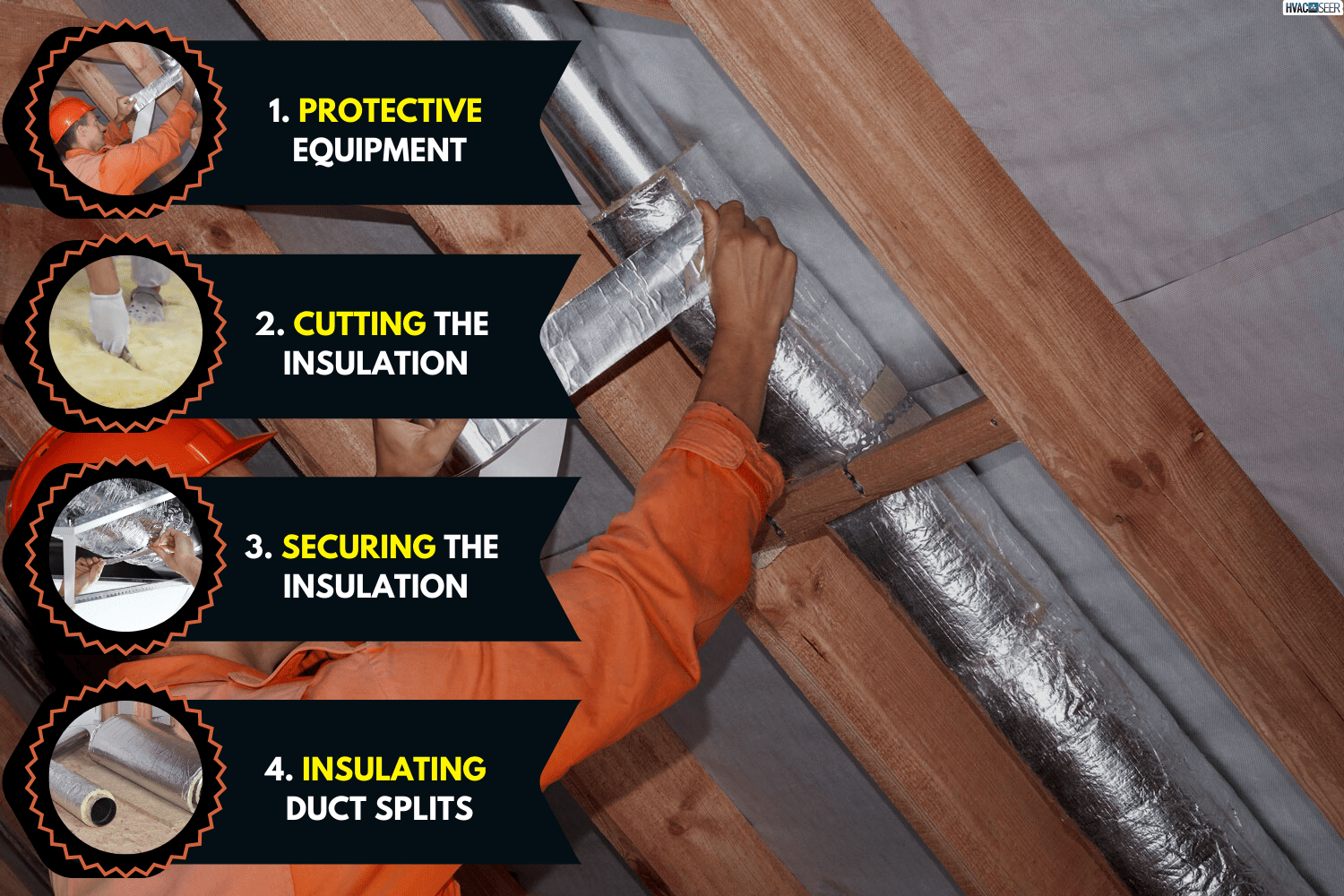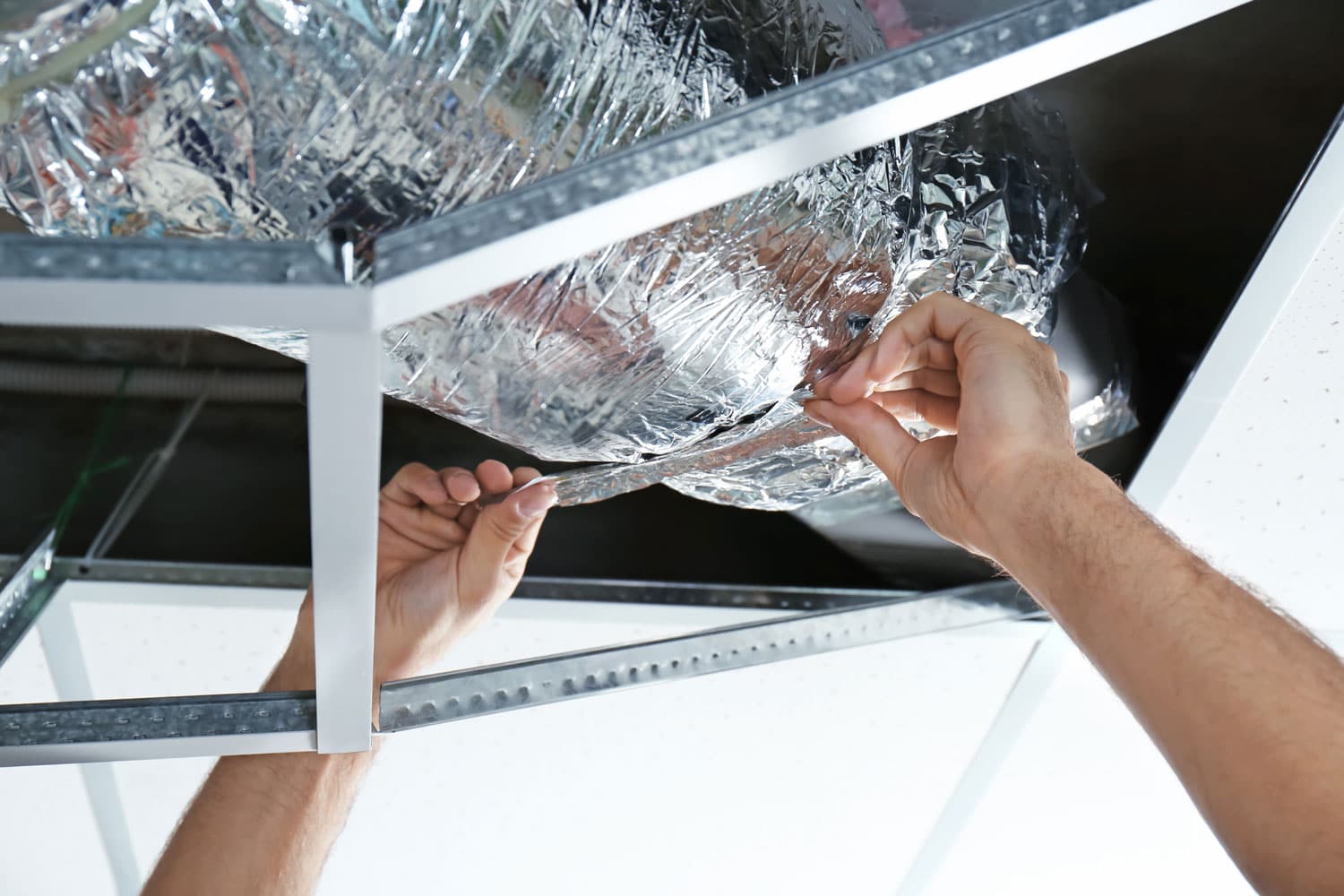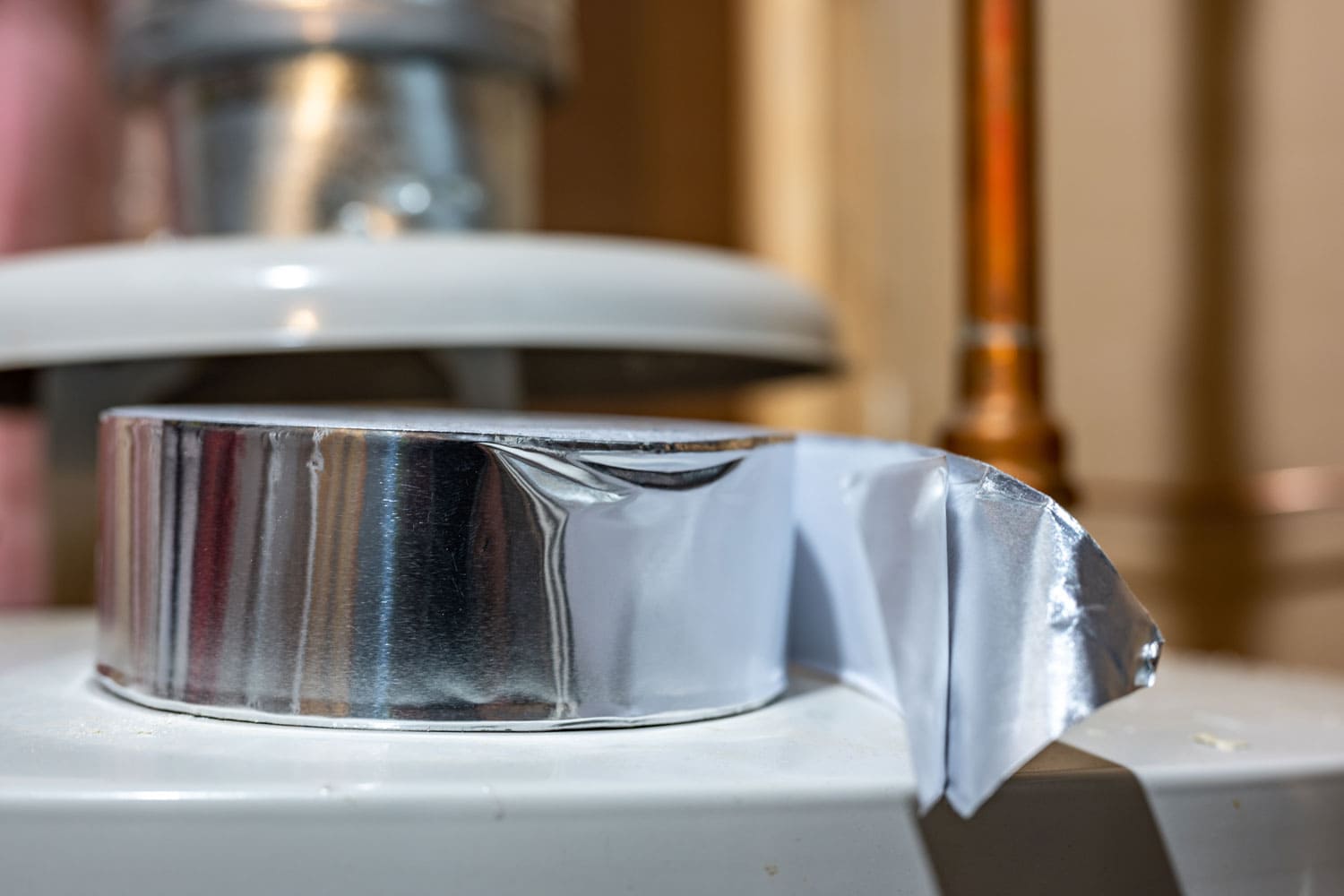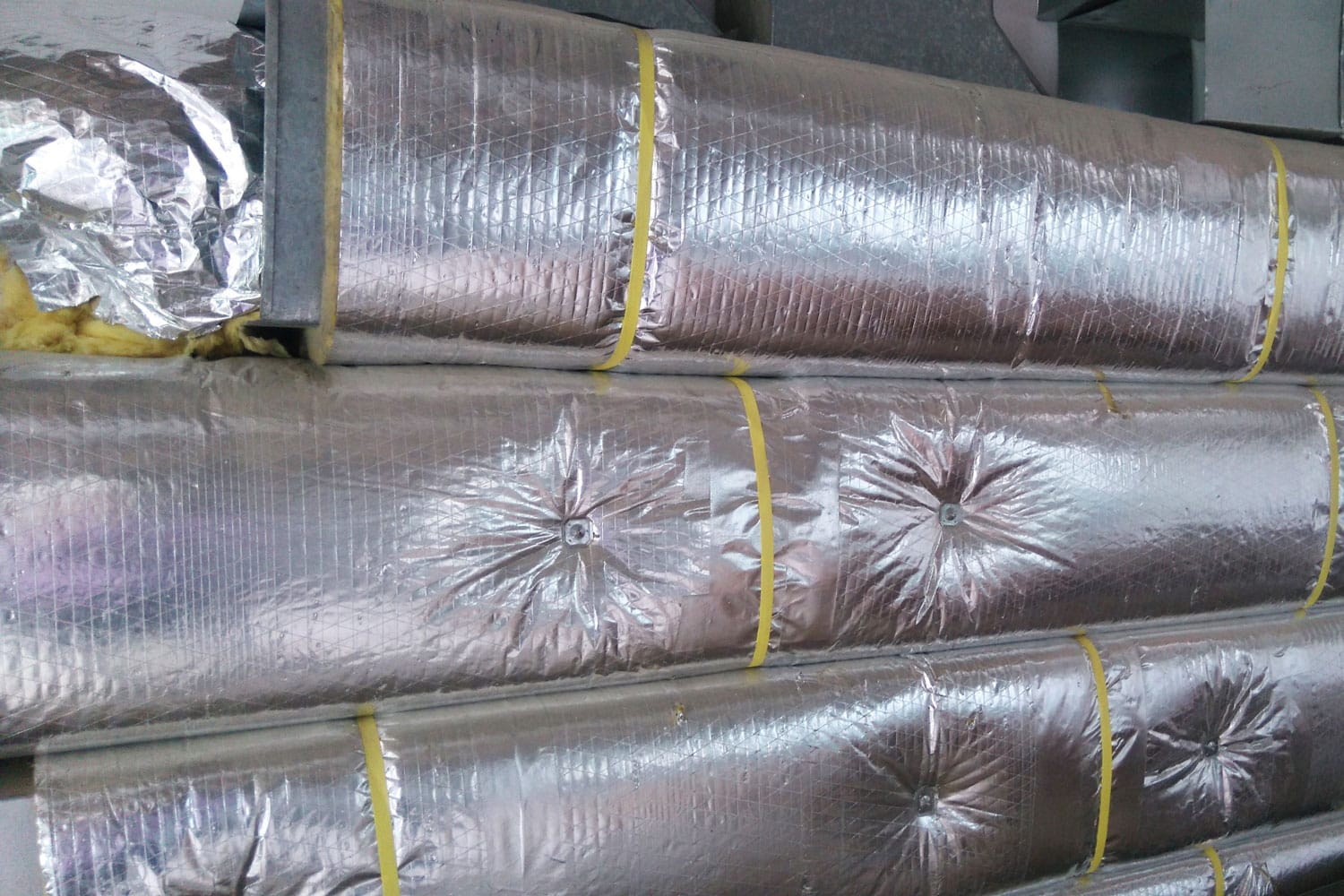Would you like to know if your ducts are insulated? Well, we have researched this topic and have answers for you. It's vital to know if your ducts are insulated to ensure their maximum efficiency.
To tell if your ducts are insulated, you will need to inspect them and see if they are wrapped in insulation. If the outside of your ducts appears as smooth metal, they aren't insulated.
In this article, we will discuss the answers to other interesting related questions, such as how do you insulate my ducts, and can you insulate over existing duct insulation? Keep reading to learn more.
How To Tell If Ducts Are Insulated?
To tell if your ducts are insulated, you will need to inspect them manually for insulation. The appearance of the outside of the ducts can tell you if they are insulated or not.
The outside of an uninsulated box duct will be smooth metal. If the ducts are insulated, you will see a foil texture.
The foil is the outside edge of the insulation used to insulate ducts. If you aren't sure, you can gently press on the outside of the ducts. If you feel that there is soft padding around your duct, it's insulated.
It can be a little more challenging for tube ducts to tell if they are insulated. If you see that a tube duct's outside edge is smooth metal, then you know that it's not insulated, but there are uninsulated tube ducts with a foil outward appearance.
The best way to know whether tube ducts are insulated is to touch them physically. If you feel a soft padding on the outside of the duct, then you know that it's insulated. If, when you feel the duct, there is no softness to it, it's likely not insulated.
Just because some of the ducts are insulated doesn't mean that all of them are. To ensure all your ducts are insulated, check multiple ducts in different areas around your house.
How Do I Insulate My Ducts?

To insulate your ducts, you will need to follow the proper steps. Let's learn the right steps to insulate your ducts.
1. Protective Equipment
The first step to insulating your ducts is putting on proper protective equipment. Insulation is made of glass fibers that can cause severe irritation to your skin, eyes, and lungs. Wear gloves, eye goggles, and a dust mask before installing insulation around your ducts.
2. Cutting The Insulation
Now that you have protective equipment, identify the first duct you want to insulate, and start at the end of it. When installing insulation, you will gradually add pieces along the duct until you've covered the whole duct.
Cut a section of insulation off a roll using a sharp box cutter. The piece of insulation you remove should be long enough to wrap around the duct without leaving a gap or causing the insulation to compress. If the insulation has to be squeezed to fit around the duct, it will leave pockets of air that can reduce its efficiency.
3. Securing The Insulation
Once you know your insulation is the perfect length to wrap around the duct without leaving gaps or squeezing tightly, you can start taping it in place. Be sure to use metal tape to keep the insulation in place, not duct tape. Duct tape will not be able to hold up with the fluctuating temperatures of ductwork.
Use several small strips of tape to hold the insulation around the duct. Once the insulation is held in place, use a long strip of tape to seal the seam along the insulation.
Attach another insulation piece around the duct directly adjacent to the last piece. Once you have that piece's seam sealed with tape, begin using tape to seal the connection point between the two pieces. Wrap the tape around the duct to close the connection point.
You can continue to follow this process until all of the ducts in your house are insulated. While this method works great for straight ducts, you will need to make a slight adjustment when insulating splits in your ducts. Let's look at how to insulate a split in your duct to see what needs to be done differently.
4. Insulating Duct Splits
When insulating a split in your ducts, you will need to custom-cut the insulation to fit around the split. It's best to try and cover the split with as few cuts and pieces as possible. Each seam is another place that can be a weak point in your insulation, so it's best to limit them.
One of the best ways to handle a split is to cut a piece of insulation that wraps around two parts of the split and cut out a hole in the insulation to allow the passage of the third duct. To enable the hole to fit around the duct, you will need a single cut from the hole to the edge of the insulation.
Cut carefully to ensure the insulation fits as snugly as possible. Finally, tape all seams along the split to provide the most effective insulation.
Can You Insulate Over Existing Duct Insulation?

You can add insulation over existing duct insulation as long as it's in relatively good condition. Adding an extra layer of insulation can significantly improve the efficiency of your insulation.
If your previously installed insulation is full of tears or holes, it can make the second layer much less effective. It's best to check the condition of your existing duct insulation before adding another layer.
Another thing to look for when adding insulation over existing duct insulation is signs of water. If the insulation has become exposed to water and you seal it under a new layer of insulation, it can cause your ducts to corrode.
The trapped water can also cause mold growth which can then be pumped around your house through the vents. Mold in your ducts can be a severe health hazard, so if you aren't sure if your previous duct insulation is okay, don't wrap new insulation over it.
How Do I Tell If My Ducts Have Leaks?

It can be challenging to tell if your ducts have leaks, but there are a couple of ways to tell. An increasing energy bill is one way to know if your ducts have leaks. As your ducts acquire leaks over time, they can become less energy efficient, which can be reflected in your energy bill.
Another way to tell if your ducts have leaks is inconsistent heating and cooling. If some rooms don't heat and cool with the rest of the house, it could signal a leak. In these situations, the leak is likely in a duct between the rest of the house and the room with inconsistent heating and cooling.
If you suspect a leak, you can turn on your heating or cooling and check your ducts for drafts. It can be helpful to wet your finger while doing this to detect airflow better. Once you have identified a leak, you must repair it to improve the efficiency of your ducts.
How Do I Repair Leaks In My Ducts?

You will need to use metal tape to repair leaks in your ducts. Attach a strip of tape over any area that is leaking air. Be sure to dust off the outside of the insulation to ensure the tape properly adheres. If you want to try metal tape to repair leaks in your ducts, here are two of the best products available on Amazon.
Aluminum HVAC Tape
You can find this product here on Amazon.
3M Aluminum Foil Tape
You can find this product here on Amazon.
Next, check along the entire duct for leaks after patching the hole. Fixing a leak will cause an increase in air pressure that can open weak areas in other parts of the duct. If a section of insulation seems to be riddled with leaks, it's best to replace that section.
It's also essential to check for signs of moisture when patching a leak. A hole in your insulation can allow water in, which can be detrimental to the duct system. If there are signs of water, replace the entire section of insulation to avoid trapping moisture.
Final Thoughts

In this article, we learned how to tell if ducts are insulated by inspecting their exteriors. We also learned how to install insulation around ducts to ensure they're highly efficient.
Remember, you can install insulation over existing duct insulation if the previous insulation is in fair condition.
We hope you enjoyed this article. If you want to learn more, check out some of these other posts:


